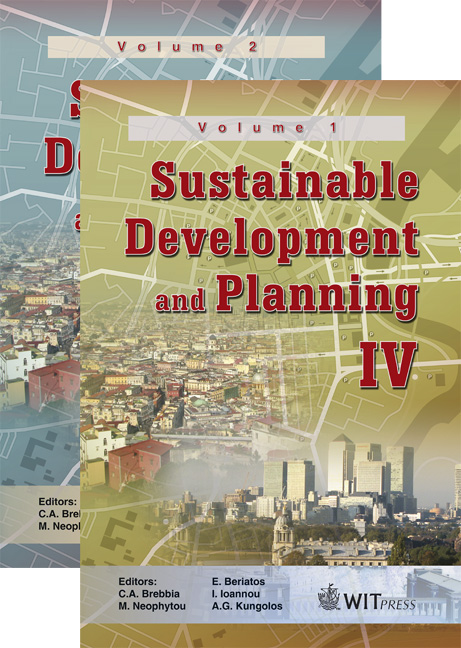Two Versions Of ‘New Gourna’ And The Dilemma Of Sustainability In New Urban Communities In Egypt
Price
Free (open access)
Transaction
Volume
120
Pages
11
Page Range
691 - 701
Published
2009
Size
1,595 kb
Paper DOI
10.2495/SDP090642
Copyright
WIT Press
Author(s)
K. G. Ahmed & L. Elgizawi
Abstract
Gourna, a vernacular village in Upper Egypt was built above the Pharonic heritage site. In order to protect the monuments from theft, the Egyptian government commissioned Hassan Fathy in the 1940s to design a new settlement for the Gourna residents. Unfortunately, the project failed as most of the residents refused to move to the new village. Recently the government repeated the attempt, but this time the second version of the New Gourna was significantly different from Fathy’s one. The main objective of this paper is to investigate if the second version of New Gourna is going to overcome the problems associated with Fathy’s New Gourna and deals successfully with the sustainable vernacular architecture of the region. It has been found that both of the two ‘New Gourna’ projects reveal how the top-down official processes might end up with either a superficial mimicry to the authentic sustainable vernacular architecture or an imposed alien built environment. Keywords: Gourna, vernacular architecture, urban communities, sustainability. 1 Introduction Gourna, a small village in Upper Egypt near Luxor, was built by its residents about 100 m to the east of the Temple of Seti I. Old Gourna was a thriving community of five hamlets built along the hills in West Luxor, on the ancient cemetery of Thebes. Until the early 19th century the community included at least parts of the Temple of Seti I. Edward William Lane related in 1825 that the village was abandoned and not a single inhabitant lived there. Isabella Frances
Keywords
Gourna, vernacular architecture, urban communities, sustainability.





